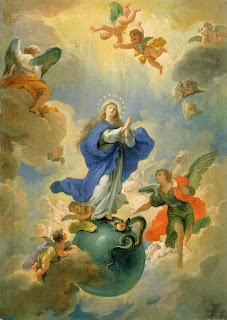
Prefettura Della Casa Pontificia
Permesso personale per partecipare all'Udienza del Santo Padre che avra luogo in
Vaticano nell'Aula Paola VI, mercoledi 6 novembre 1991, all ore 11.
Ingresso: A No: 494
In an old travel album that I've had for nearly two decades is a folded up piece of green paper with the above words. It's in Italian but you need not speak the language to understand that it's a ticket for an audience with the Pope.
I'm probably one of only a handful of people in the world with an unused ticket since they are hard to come by.
In 1991, Pope John Paul II met with an audience just once a week, on a Wednesday. So, I was told I might not get a ticket. But, I did after going through the proper channels and obtaining letters of permission from my parish priest and the Diocese of Providence, Rhode Island.
I missed my audience with the Pope because the night before I was walking down the Via Condotti in Rome and a handsome guy in a Lamborghini pulled up alongside me.
"You're not from around here," he said with a killer smile, thick, dark hair, or should I say the stereotypical, extremely masculine Italian look.
I wondered how he knew I was a tourist since I was dressed to blend in with the locals: white pants, a colorful, sleeveless shirt, sunglasses, and sandals.
When I got in the car he told me it was because I was staring at a building that only an American would notice. He said his name was Sandro and that I was crazy for getting in the car with a stranger in a foreign country.
"If my sister did that, I'd kill her," he said.
I explained that he looked like my family back home. I knew I was safe because he seemed like any guy I would meet in North Providence. It's funny that I was a world away and yet in a place so familiar.
So, Sandro gave me an insider's look at Rome, where parties often begin after midnight.
One of our stops was Monte Mario, the highest hill in the Eternal City, where we had sex in his car.
“Have you ever made love with an Italian before?” he whispered to me as he removed my shirt.
“I am Italian,” I replied, barely able to get the words out as he kissed me so hard with passion that my lips were black and blue the following morning.
Although I was divorced, I was still so naïve. When we finally got to Sandro's place in Frascati, where women’s clothing was strewn throughout, I was ever hopeful that he might be a cross dresser, not the married womanizer who had me sneak into the house behind him.
Still, I let go that night. We did to each other, whatever our hearts desired.
St. Raphael Kalinowski
It would have pretty amazing to have had an audience with the Pope, because that very week, he canonized St. Raphael Kalinowksi (also known as St. Joseph Kalinowski) on Nov. 17, 1991.
St. Raphael Kalinowski was born on Sept. 1, 1835 in modern day Vilnius, Lithuania. He was a Polish Discalced Carmelite Friar. He died on Nov. 15, 1907 in Wadowice, Poland which was the birthplace of Pope John Paul II. St. Raphael Kalinowski's feast day is Nov. 19.








_01.jpg)








%3B_Peter_Paul_Rubens.jpg)












